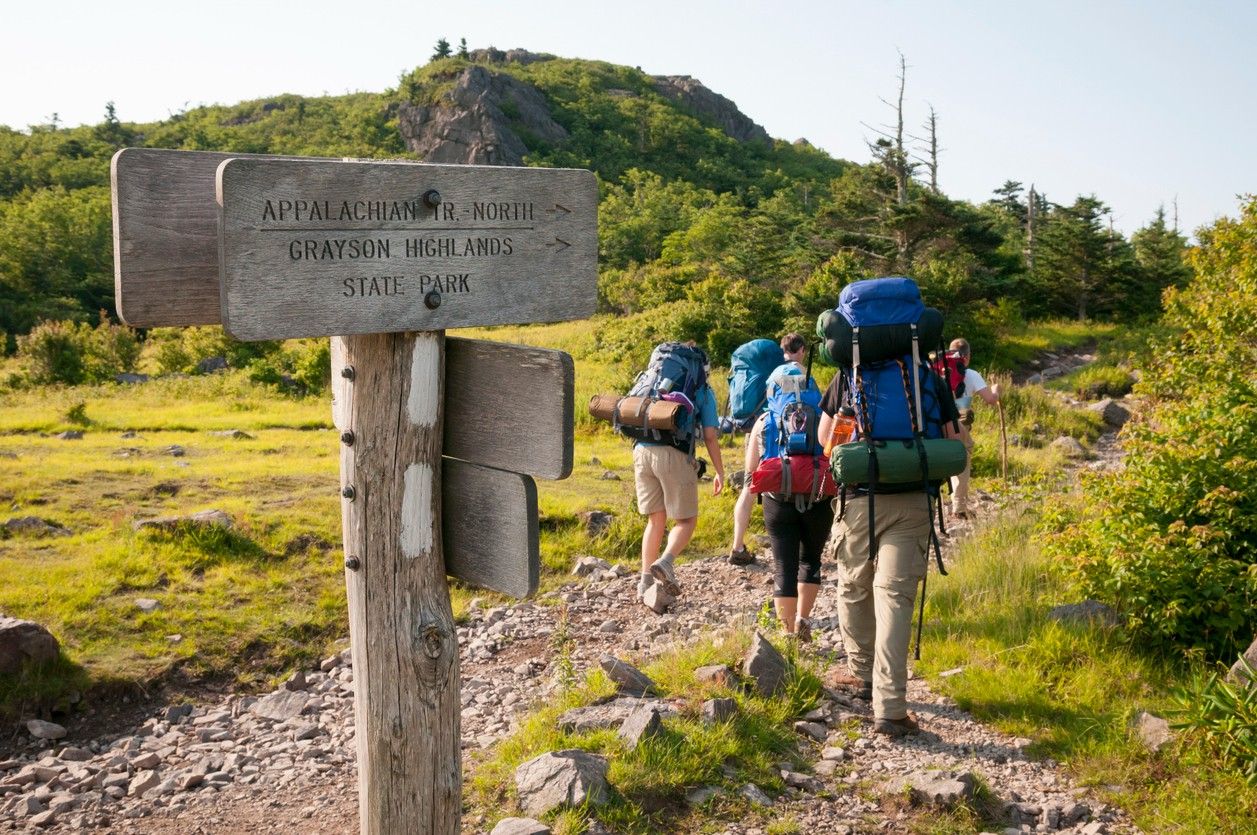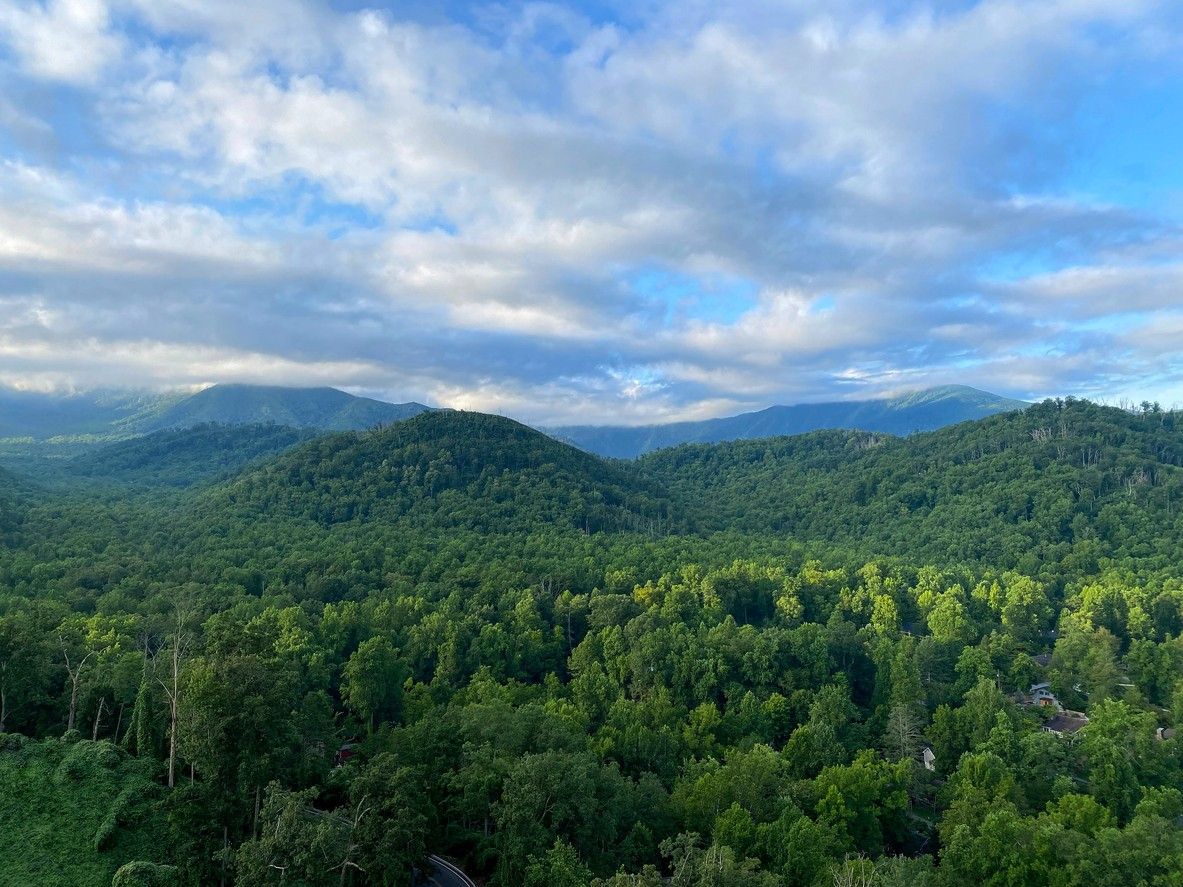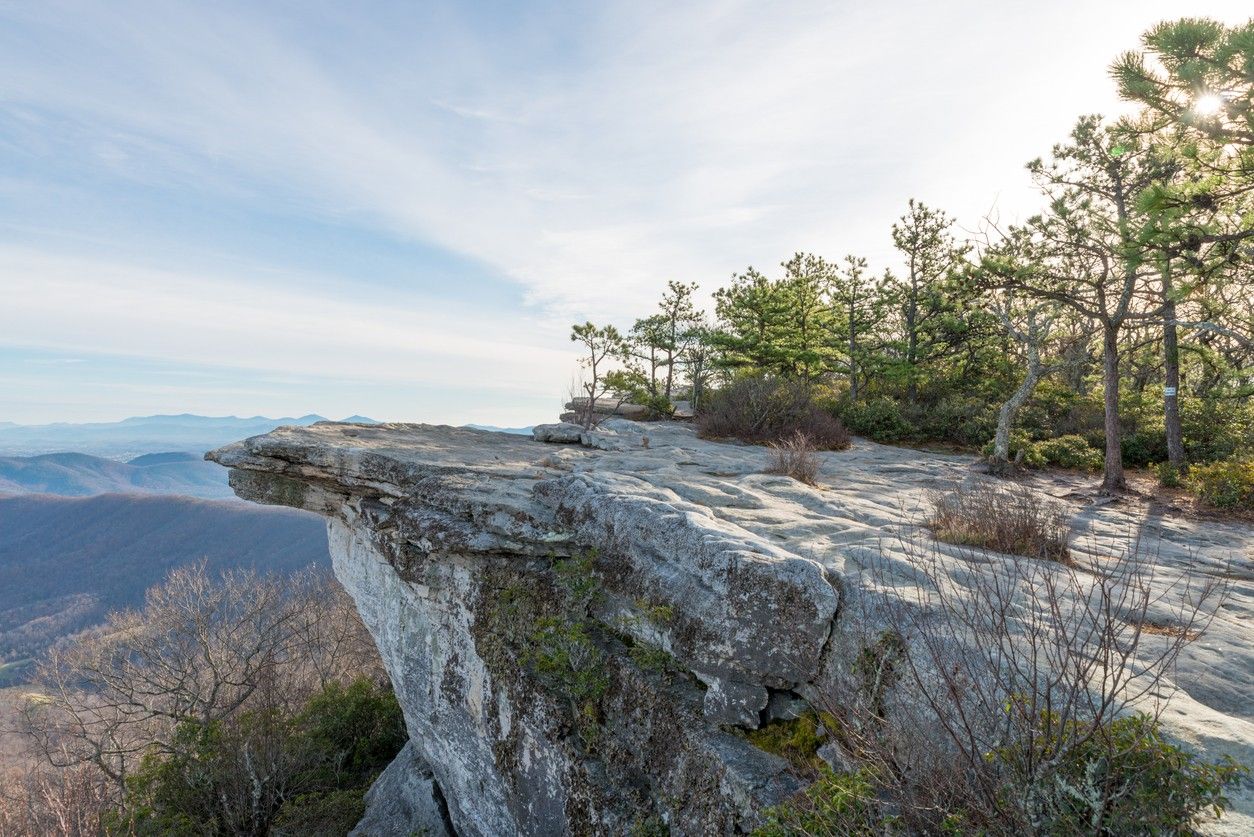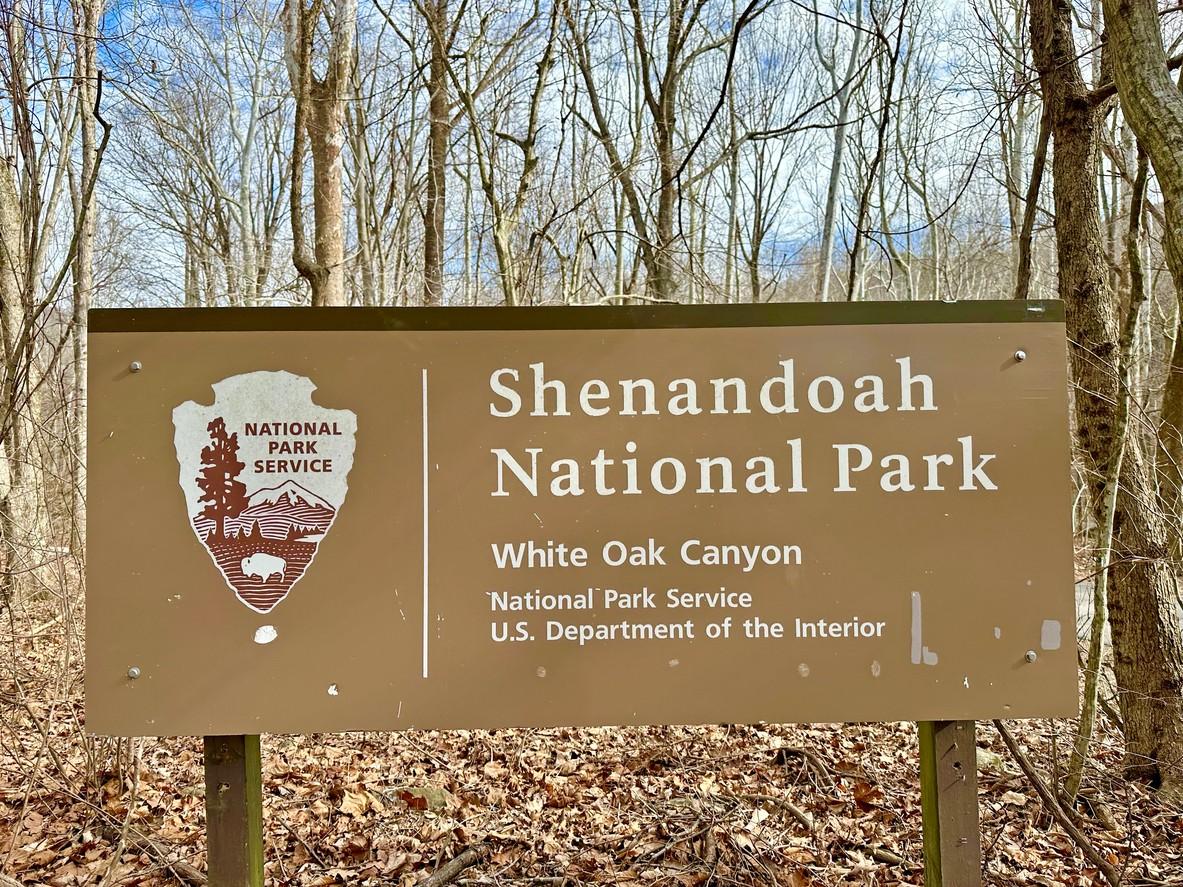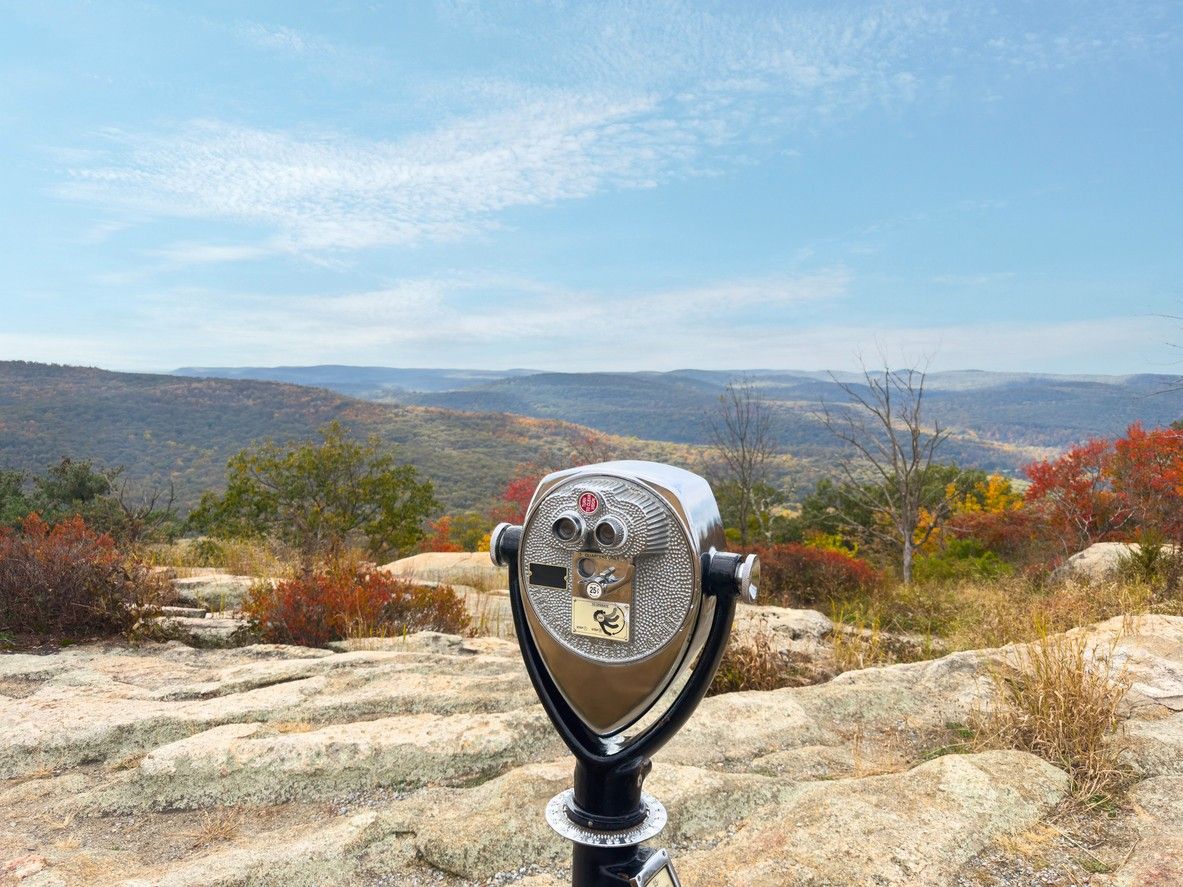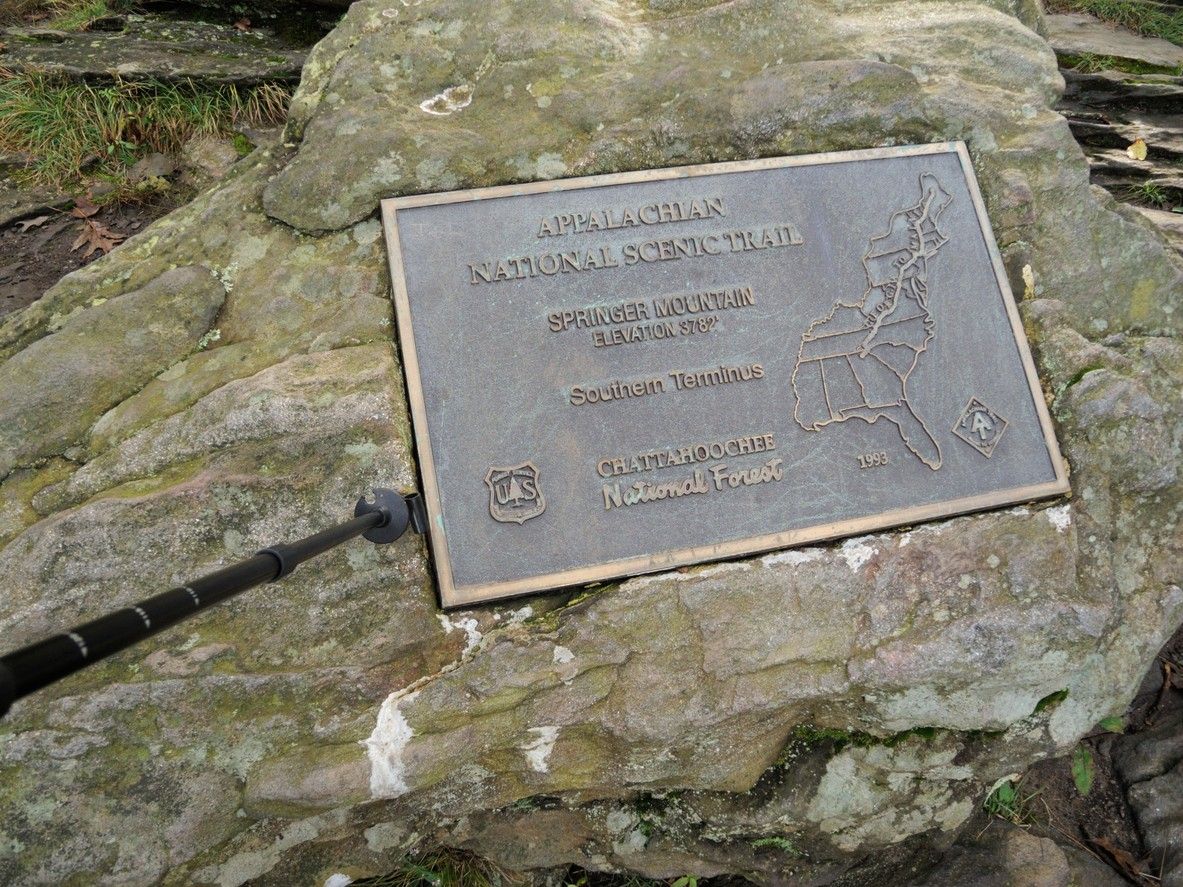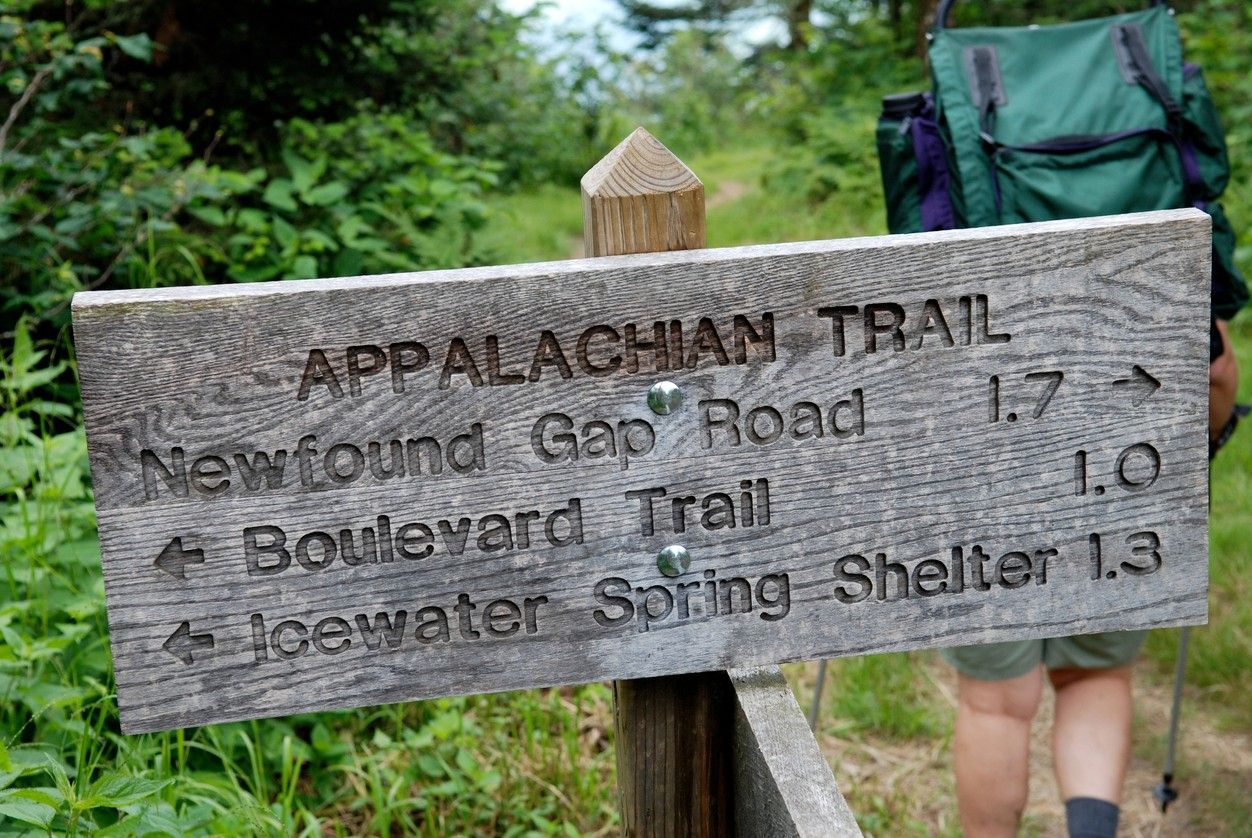The Appalachian Trail — A Journey Through the Eastern United States
The Appalachian Trail, a 2,200-mile footpath stretching from Georgia to Maine, is more than just a hiking trail; it is a national treasure that offers a unique glimpse into the natural beauty, cultural heritage, and rich history of the eastern United States. Traversing 14 states and passing through some of the most stunning landscapes in the country, the Appalachian Trail is a testament to the enduring power of nature and the resilience of the human spirit. Completed in 1937, the Appalachian Trail is managed by the National Park Service, the U.S. Forest Service, and a dedicated network of volunteers and member clubs under the Appalachian Trail Conservancy (ATC) umbrella. The trail passes through a diverse range of landscapes, from the lush forests and rolling hills of the southern Appalachians to the rugged peaks and alpine tundra of the White Mountains in New Hampshire.
The Appalachian Mountains themselves are a geological wonder, formed over 480 million years ago by colliding continents. The range is divided into three main sections: the Northern, Central, and Southern Appalachians, each with its unique features and attractions. From the valley-and-ridge topography created by differential erosion to the intricate water systems and waterfalls that dot the landscape, the Appalachian Mountains showcase geological diversity and beauty. But the Appalachian Trail is more than just a natural wonder; it is also a cultural and historical landmark that has played a significant role in shaping the identity of the eastern United States. The trail passes through numerous small towns and communities that have been home to various groups over the centuries, from Native American tribes to European settlers and African Americans. The Appalachian region has a rich cultural heritage characterised by traditional music, crafts, and foodways that have been passed down through generations.
Hiking the Appalachian Trail is a challenging and rewarding experience that requires careful planning, preparation, and a willingness to embrace the unknown. Whether you are a thru-hiker attempting to complete the entire trail in one season or a section hiker exploring a specific region, the Appalachian Trail offers a chance to disconnect from the stresses of modern life and reconnect with nature and yourself.
Planning Your Appalachian Trail Adventure
Thru-Hiking vs. Section Hiking
When it comes to hiking the Appalachian Trail, there are two main approaches: thru-hiking and section hiking. Thru-hiking involves completing the entire 2,200-mile trail in one continuous journey, typically taking five to seven months. This is an incredibly challenging and rewarding experience that requires significant planning, preparation, and commitment. Thru-hikers must be able to carry all of their gear and supplies on their backs, resupply at designated points along the trail, and adapt to changing weather conditions and terrain. Thru-hiking the Appalachian Trail is not for everyone, however. It requires a significant time commitment and can be physically and mentally demanding. Thru-hikers must be prepared to hike an average of 15-20 miles per day, often through rugged terrain and challenging weather conditions. They must also be able to cope with the psychological challenges of being away from home and loved ones for an extended time.
For those who are unable or unwilling to commit to a thru-hike, section hiking is a popular alternative. Section hiking involves completing the trail in smaller segments, often over several years. This approach allows hikers to tackle the trail at their own pace and on their schedule, without the pressure of completing the entire trail in one go. Section hiking also allows for greater flexibility in terms of planning and preparation. Hikers can choose to tackle sections of the trail that are most appealing to them, based on factors such as scenery, difficulty, and accessibility. They can also plan their hikes around work and family obligations, and take advantage of optimal weather conditions in different regions of the trail. One of the benefits of section hiking is that it allows hikers to experience the diversity of the Appalachian Trail without committing to a full-thru-hike. The trail passes through 14 states and a variety of different landscapes, from the rolling hills of Georgia to the rugged peaks of Maine. By section hiking, hikers can experience the unique character and challenges of each region and appreciate the incredible diversity of the trail.
Whether you choose to thru-hike or section hike the Appalachian Trail, it is important to be well-prepared and to follow Leave No Trace principles to minimise your impact on the environment. The trail is a national treasure that belongs to all of us, and it is up to each hiker to do their part to protect and preserve it for future generations.
Gear and Resupply
Proper gear and resupply planning are essential for a successful Appalachian Trail hike, whether you are thru-hiking or section hiking. The right gear can make the difference between a comfortable and enjoyable hike and a miserable and potentially dangerous one. When it comes to gear, there are a few key considerations to keep in mind. First and foremost, hikers should aim to keep their pack weight as low as possible, while still ensuring that they have all of the necessary equipment and supplies. This typically means investing in lightweight, high-quality gear that is designed specifically for backpacking.
Some of the essential gear items for an Appalachian Trail hike include:
Backpack (lightweight, durable, and comfortable)
Sleeping bag (rated for the appropriate temperature range)
Sleeping pad (for insulation and comfort)
Stove and fuel (for cooking meals)
Water filtration system (for purifying water from natural sources)
Headlamp or flashlight (for navigating in the dark)
First aid kit (including blister treatment and basic medications)
Clothing (moisture-wicking, quick-drying, and layered for varying temperatures)
Footwear (sturdy, comfortable, and broken-in hiking boots or trail runners)
Food (lightweight, calorie-dense, and easy to prepare)
In addition to gear, hikers must also plan for resupply points along the trail. Resupply points are locations where hikers can restock food, fuel, and other necessary supplies. Some hikers choose to mail resupply packages to post offices or other designated locations along the trail, while others prefer to purchase supplies locally as needed. When planning resupply points, hikers should consider factors such as the distance between resupply points, the availability of food and other supplies, and the cost of shipping or purchasing supplies. Hikers should also be aware of any regulations or restrictions regarding the use of certain types of fuel or the disposal of waste in different regions of the trail. One strategy for resupply is to use a combination of mail drops and local purchases. For example, hikers might mail themselves packages of specialised gear or hard-to-find items, while purchasing fresh food and other perishable items locally. This approach allows for greater flexibility and can help to reduce the overall cost of resupply. Ultimately, the key to successful gear and resupply planning is to be well-informed, well-prepared, and adaptable. By doing thorough research, investing in high-quality gear, and planning for resupply points, hikers can ensure that they have everything they need to complete their Appalachian Trail journey safely and comfortably.
Mountain Crossings at Neel Gap, GA (mile 31.3) — A full-service outfitter with gear and food resupply right on the trail.
Fontana Dam, NC (mile 164.3) — Many hikers send resupply boxes to the post office here before entering Great Smoky Mountains National Park. The general store has limited and expensive options.
Damascus, VA (mile 470.7) — A popular trail town with outfitters, hostels, and resupply options.
Harpers Ferry, WV (mile 1026.1) — The symbolic halfway point with the ATC headquarters. Limited resupply options in town, so sending a box to the post office is recommended.
Delaware Water Gap, PA (mile 1293) — Hikers can mail packages via FedEx/UPS to Edge of the Woods Outfitters, open 7 days a week.
Hanover, NH (mile 1747.7) — Home to Dartmouth College with several full grocery stores and an outfitter.
Monson, ME (mile 2074.9) — The last full-service town before the 100 Mile Wilderness. Hikers can send packages to Shaw's Hiker Hostel.
In general, the AT has resupply points every 3-5 days on average, with options to resupply at stores or by mailing packages to post offices, outfitters, and hostels that hold hiker boxes. A detailed guidebook or app can provide the most up-to-date information on resupply locations and services along the trail.
Sections of the Appalachian Trail
The Appalachian Trail is divided into several distinct sections, each with its unique character, challenges, and highlights. While some hikers attempt to thru-hike the entire 2,200-mile trail in one continuous journey, many choose to tackle the trail in smaller sections for several years. Here are some of the most notable sections of the Appalachian Trail:
Southern Appalachians (Georgia, North Carolina, Tennessee)
The Southern Appalachians, encompassing the states of Georgia, North Carolina, and Tennessee, are home to some of the most iconic and beautiful sections of the Appalachian Trail. This region is characterised by lush forests, rolling hills, and stunning mountain vistas that attract hikers from around the world. In Georgia, the Appalachian Trail begins at Springer Mountain, the southern terminus of the trail. From here, the trail winds through the Chattahoochee-Oconee National Forest, passing by scenic overlooks and waterfalls like Amicalola Falls, the tallest waterfall in the state. The trail also passes through the Blood Mountain Wilderness, where hikers can enjoy stunning views of the surrounding mountains from the summit of Blood Mountain, the highest point on the Georgia section of the trail.
As the trail enters North Carolina, hikers are greeted by the stunning beauty of the Great Smoky Mountains National Park. This park, which straddles the border between North Carolina and Tennessee, is home to some of the most diverse plant and animal life in the country, as well as stunning mountain vistas and waterfalls. The trail passes through the heart of the park, offering hikers the chance to experience the beauty of the Smokies up close. The park also boasts some of the highest peaks in the eastern United States, including Clingmans Dome (6,643 feet) and Mount Guyot (6,621 feet).In addition to the Great Smoky Mountains, the North Carolina section of the trail also passes through several other notable areas, including the Nantahala National Forest and the Pisgah National Forest. These forests are home to stunning waterfalls, scenic overlooks, and diverse plant and animal life, making them popular destinations for hikers and nature enthusiasts. As the trail enters Tennessee, hikers are treated to even more stunning mountain vistas and scenic beauty. The trail passes through the Cherokee National Forest, where hikers can enjoy stunning views of the surrounding mountains and valleys from the summit of Roan Mountain, one of the highest peaks in the state. The trail also passes through the town of Hot Springs, a popular destination for hikers looking to resupply or take a break from the trail.
Virginia and West Virginia
The Appalachian Trail through Virginia and West Virginia offers a diverse range of landscapes and experiences, from the rugged peaks of the Blue Ridge Mountains to the historic towns and cultural sites of the Shenandoah Valley. Some notable highlights of this section include:
McAfee Knob — One of the most iconic viewpoints on the entire Appalachian Trail, this rocky outcropping offers panoramic views of the Catawba Valley and is a popular spot for photographers and hikers alike.
Grayson Highlands State Park — Known for its wild ponies and expansive vistas, this high-elevation section of the trail is a favourite among hikers and offers a unique opportunity to experience the beauty of the Appalachian highlands.
Shenandoah National Park — This scenic park, established in 1935, is home to over 500 miles of hiking trails and offers a glimpse into the cultural history of the Blue Ridge Mountains. The park is also known for its stunning fall foliage and abundant wildlife, including black bears and white-tailed deer.
Harpers Ferry — This historic town, located at the confluence of the Potomac and Shenandoah Rivers, played a key role in the Civil War and is now home to the Appalachian Trail Conservancy headquarters. The town offers a variety of cultural and historical attractions, as well as opportunities for outdoor recreation.
Mid-Atlantic (Maryland, Pennsylvania, New Jersey, New York)
The Mid-Atlantic section of the Appalachian Trail passes through a diverse range of landscapes, from the rolling hills of Maryland and Pennsylvania to the rugged peaks of New Jersey and New York. Some notable highlights of this section include:
Delaware Water Gap — This scenic gorge, carved by the Delaware River, has been a popular recreation destination for over a century and offers a variety of hiking, camping, and paddling opportunities. The area is also home to numerous historic sites and structures, including the Millbrook Village historic district.
Bear Mountain State Park — Located just outside of New York City, this popular park offers a variety of hiking trails and scenic viewpoints, including the famous Bear Mountain Bridge, which spans the Hudson River and offers stunning views of the surrounding landscape.
High Point State Park — This park, located in the northwest corner of New Jersey, is home to the highest point in the state (1,803 feet) and offers a variety of hiking and camping opportunities. The park is also known for its stunning fall foliage and abundant wildlife, including black bears and bald eagles.
New England (Connecticut, Massachusetts, Vermont, New Hampshire, Maine)
The New England section of the Appalachian Trail is known for its rugged terrain, stunning vistas, and rich cultural history. Some notable highlights of this section include:
White Mountains — The rugged peaks of the White Mountains in New Hampshire offer some of the most challenging and rewarding hiking on the entire Appalachian Trail. This section includes the famous Presidential Range, home to Mount Washington (6,288 feet), the highest peak in the northeastern United States.
Green Mountains — The rolling hills and dense forests of the Green Mountains in Vermont offer a more gentle hiking experience, with plenty of opportunities for scenic vistas and wildlife viewing. This section also passes through several historic towns and villages, including Manchester and Woodstock.
Baxter State Park — The northern terminus of the Appalachian Trail, located in Baxter State Park in Maine, offers some of the most remote and rugged hiking on the entire trail. The park is home to Mount Katahdin (5,269 feet), the highest peak in Maine and the endpoint of the Appalachian Trail.
Everything You Need To Know Before Your Appalachian Trail Hike
Appalachian Trail Maps and Guides
One of the most important tools for any hiker planning to tackle the Appalachian Trail is a reliable map and guidebook. With over 2,000 miles of trail spanning 14 states, having a detailed and up-to-date map and guidebook can make all the difference in ensuring a safe and enjoyable hiking experience. There are several options available when it comes to Appalachian Trail maps and guides, each with its unique features and benefits. One of the most popular options is the Appalachian Trail Conservancy's (ATC) official guidebooks and maps. These resources are published by the ATC, the organisation responsible for managing and maintaining the trail, and are considered the most comprehensive and up-to-date sources of information for hikers.
The ATC's guidebooks are divided into 11 sections, each covering a specific region of the trail. These guidebooks provide detailed descriptions of the trail, including information on terrain, water sources, campsites, and resupply points. They also include information on local history, culture, and natural features, making them a valuable resource for hikers looking to learn more about the areas they are passing through. In addition to the guidebooks, the ATC also publishes a set of maps that cover the entire length of the trail. These maps are highly detailed and include information on trail elevation, water sources, and campsites, as well as nearby roads and towns. The maps are also waterproof and tear-resistant, making them durable enough to withstand the rigours of the trail. Another popular option for Appalachian Trail maps and guides is the Guthook Guides app. This app, which is available for both iOS and Android devices, provides detailed maps and information for the entire length of the trail. The app includes features like real-time GPS tracking, elevation profiles, and information on water sources and campsites, making it a valuable tool for hikers looking to stay on track and informed while on the trail.
Leave No Trace and Trail Etiquette
As with any wilderness experience, hikers need to practice Leave No Trace principles and trail etiquette to minimise their impact on the natural environment and ensure a positive experience for all trail users.
The seven principles of Leave No Trace include:
Plan ahead and prepare
Travel and camp on durable surfaces
Dispose of waste properly
Leave what you find
Minimise campfire impacts
Respect wildlife
Be considerate of other visitors
Safety and Emergency Preparedness
Hiking the Appalachian Trail can be a safe and enjoyable experience, but it is important to be aware of potential hazards and take appropriate precautions. Some key safety considerations include:
Carrying a well-stocked first-aid kit and knowing how to use it
Being prepared for extreme weather conditions, including heat, cold, and storms
Knowing how to properly store and hang food to avoid attracting wildlife
Carrying a reliable means of communication, such as a satellite phone or personal locator beacon
Being aware of hunting seasons and wearing bright colours during these times
Knowing how to recognise and avoid poisonous plants, such as poison ivy and poison oak
In the event of an emergency, hikers should know how to activate their emergency communication devices and provide clear and concise information to rescuers. It is also important to have a backup plan and to let someone know your itinerary and expected return date before setting out on the trail.
Hiking All-Year-Around
In general, fall and late spring offer the most comfortable temperatures and conditions for hiking the majority of the Appalachian Trail. Summer is best for the northernmost sections, while thru-hikers should start in late winter/early spring to complete the trail in one season. Winter hiking is possible but requires extra precautions and gear
Late spring (mid-April to May) — This is a great time to hike, with wildflowers in bloom and more extensive views before leaves fill in. However, avoid the "mud season" in April and May in Vermont, New Hampshire, and Maine.
Summer (June to August) — This is prime time for hiking in northern New England. In Vermont, June is the earliest recommended time, especially at higher elevations. In Maine and New Hampshire, good hiking conditions start in July, with August being even better with fewer bugs. However, summer can be hot and humid in other parts of the trail.
Fall (September to October) — This is considered the best season for hiking in the Mid-Atlantic region due to cooler temperatures and less frequent rain compared to spring and summer. September is uncrowded in many places, while October offers prime fall foliage colours.
Late February to early April — For northbound thru-hikers, starting in late February, March, or early April allows them to avoid most of the winter season while reaching Mount Katahdin before its October closure. February starts also mean less crowding and a fresher trail experience compared to March and April
Tips for Dealing with Wildlife Encounters on the Appalachian Trail
Respect wildlife by observing from a distance without approaching or following animals. Never try to feed, pet, or play with wild animals.
Make noise while hiking to avoid surprising animals, especially in areas with bears or potentially dangerous wildlife. Talk, sing, clap, or wear bear bells to alert animals of your presence.
Keep your distance, at least 25 yards from most animals and 100 yards from predators like bears and wolves. If animals react to your presence, you are too close.
Avoid getting between a mother and her young, as most animals are very protective and may become aggressive.
Remain calm and do not run away if you encounter an animal, as sudden movements can provoke them. Running may trigger a predator's instinct to chase.
Properly store food and dispose of waste using wildlife-resistant containers to avoid attracting animals to your campsite. Use unscented soaps and keep a clean camp.
Familiarise yourself with the types of animals in the area and local regulations before your hike. Be aware of tracks, droppings, and other signs of nearby wildlife.
Hike in groups when possible to more easily make noise and appear larger to potential predators.
Avoid hiking at night, dawn, and dusk when many animals are most active.
Keep children and pets close to you, as they may be seen as prey by some predators.
Report any close calls, unusual animal behaviour, or sick/dead animals to park rangers so they can take appropriate action.
Related Articles

Let us know you agree to cookies
We use marketing, analytical and functional cookies as well as similar technologies to give you the best experience. Third parties, including social media platforms, often place tracking cookies on our site to show you personalised adverts outside of our website.
We store your cookie preferences for two years and you can edit your preferences via ‘manage cookies’ or through the cookie policy at the bottom of every page. For more information, please see our cookie policy.

